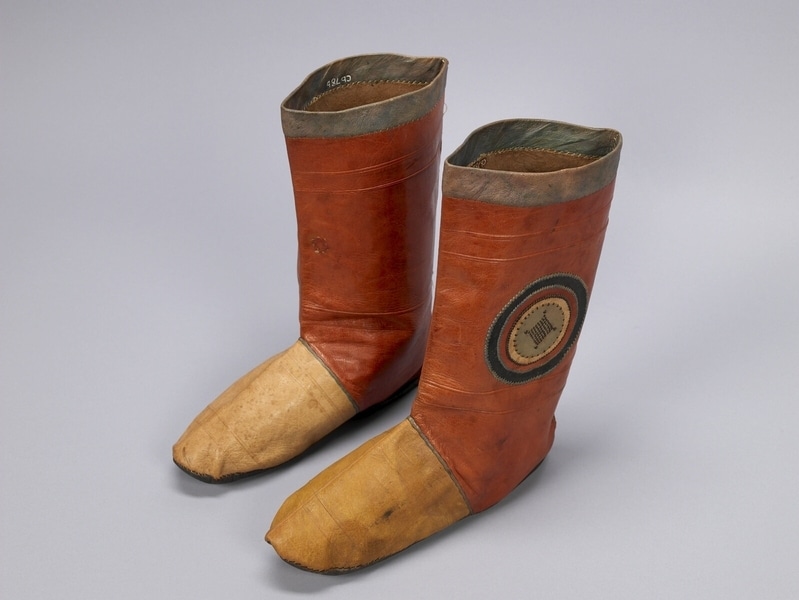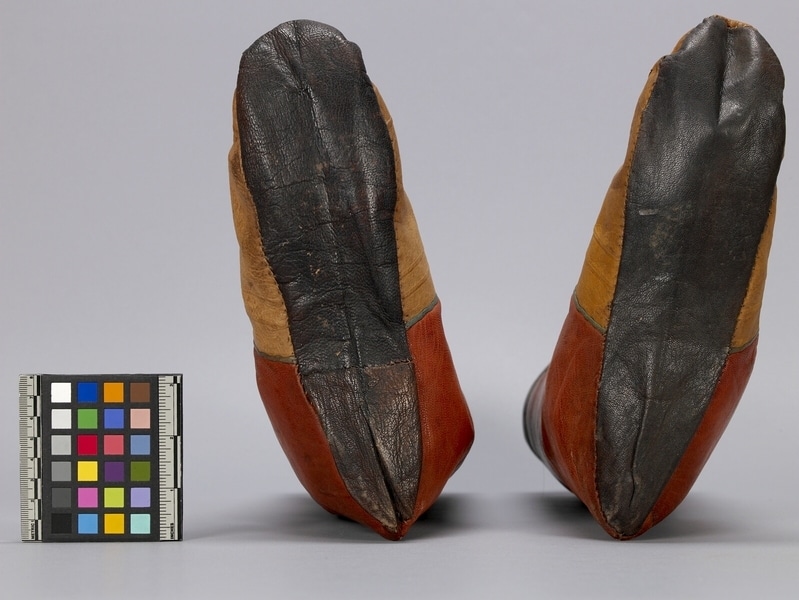Boots Item Number: Cb78 a-b from the MOA: University of British Columbia


Description
Pair of goatskin boots in three main parts. Sole in black, front upper in yellow and back upper and legging in red/brown; trimmed with bands of leather in blue/green. Uppers have horizontal bands of impressed decoration enclosing an applique decoration of concentric circles of cut-out leather on the outer aspect of each leg. The boots are soft soled and show little wear. The right boot has a small patch sewn on the inner leg.
History Of Use
Leather goods are widely made and traded in the Sub-Sahara of West Africa. Boots are characteristically worn by nomadic pastoralists and horsemen. This pair is in a style and decorative technique characteristic of Northern Nigeria and of the Kano area, especially the use of 'Kano green'.
Cultural Context
Worn on the feet.
Iconographic Meaning
The colour green, significant in Mohammedan ritual, indicates the influence of Islam in Northern Nigeria.
Specific Techniques
The red dyes used for the leather making up the calves of the boots were made from a variety of sorghum (or karan dafi). A watery extract of wood ashes or natron would sit in a bowl for three to four hours; the dyestuff was pulverized in a wooden mortar and mixed with the extract. The tanned hide would be dressed with ground-nut oil or shea butter and then immersed in the mixture for one to two minutes, and then wrung out and shaken. Finally the hide would be rinsed in cold water, which had been acidulated with lime juice and tarmind pulp.
Item History
- Made in Kano, Nigeria ?
- Collected during 1910
- Owned by Norman Lowden
- Owned by Yvonne Adams before August 3, 1976
- Received from Yvonne Adams (Donor) on August 3, 1976
What
Who
- Culture
- Hausa
- Previous Owner
- Norman Lowden and Yvonne Adams
- Received from
- Yvonne Adams (Donor)
Where
- Holding Institution
- MOA: University of British Columbia
- Made in
- Kano, Nigeria ?
When
- Collection Date
- during 1910
- Ownership Date
- before August 3, 1976
- Acquisition Date
- on August 3, 1976
Other
- Item Classes
- textiles
- Condition
- good
- Accession Number
- 0321/0006 a-b